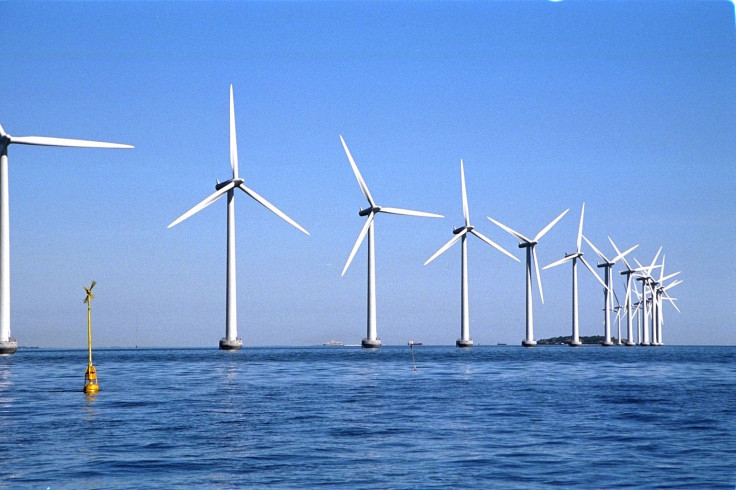More Than Half Of Germany’s Electricity Production In First Quarter Came From Renewables

KEY POINTS
- 52% of Germany’s electricity came from renewable power sources in the first quarter of this year
- Onshore wind provided 28.9% of electricity needs in the quarter
- Germany's expansion of wind farms have slowed down
More than one-half (52%) of Germany’s electricity came from renewable power sources in the first quarter of this year, the first time that figure ever surpassed the 50% mark over a full quarter, and up from about 44% in the first quarter of 2019.
The progress towards increased reliance on renewables were driven by significant wind and solar production in February and March and a drop in overall energy use due to the effects of the coronavirus pandemic.
On the whole, Germany used a total of 148 billion kilowatt-hours of electricity in the first quarter of 2020, down 2% from the same quarter in 2019. The bulk of Germany’s renewable power came from onshore wind, which provided 28.9% of electricity needs, up from 23.7% in the first quarter of 2019.
The data also reflected the gradual ongoing shutdown of Germany’s nuclear and coal power plants.
However, the utilities association Bundesverband der Energie und Wasserwirtschaft, or BDEW, cautioned that the unusual circumstances of the first quarter precluded making any assumptions about future trends.
"The performance of renewables is very encouraging. However, we should always bear in mind that this is only a snapshot and includes many one-off events,” said BDEW’s managing director Kerstin Andreae.
50Hertz Transmission GmbH, the grid operator, noted that in February, wind and solar power together provided 85% of electricity needs in 50Hertz’s operating region – an area that extends from the Baltic Sea to the Ore Mountains near the border with the Czech Republic. On Mar. 23, the utility produced a record 8500 megawatts of solar power without having to close down any photovoltaic systems.
Germany has vowed to produce 18% of its total energy consumption with renewables by the end of 2020.
"The EU renewable energy target of 18% in 2020 is within reach,” said economy minister Peter Altmaier. “We must now work to ensure that we achieve the targets on a sustainable basis and further increase the share of renewable energy."
However, utilities warn that Germany’s renewables sector faces some difficult struggles ahead. For example, the development of onshore wind farms has stalled, while the solar industry is facing an imminent limit on government subsidies.
“The record figures [in renewable production] stand in sharp contrast to the dramatic situation in the current expansion of wind and [photovoltaic] systems,” Andreae said. “If the obstacles and caps are not removed quickly, the 65% target [for electricity production by renewable energy] by 2030 will hardly be achievable.”
She also said that German lawmakers need to keep investing in renewables.
“The difficult economic situation further intensifies the pressure to act. It must be ensured that further investments are made in the expansion of renewables so that they can guarantee the energy supply of tomorrow,” Andreae said.
The slowdown in wind power expansion in Germany dampened overall European investments in the renewable sector.
Industry association WindEurope said 2019 “could have been a record year for wind investments in Europe had it not been for a sharp fall in new investments in Germany.”
Such investments in Germany plunged to $330 million in 2019 from $870 million in 2018.
"The problem in Germany is the permitting process: the rules are too complex and it’s unclear where they’re heading – the government must clarify things to get investors back,” said WindEurope CEO Giles Dickson.
Across Europe, wind investments dropped by almost 25% last year to $20.7 billion for 11.7 gigawatts (GW) of new wind farm projects, most of them onshore.
“Governments and investors continue to have strong appetite for onshore wind, because in most of Europe it is the cheapest form of new power generation capacity," said Dickson.
Wind power now accounts for 15% of European electricity production and the European Commission wants to bring that figure to 50% by mid-century, he added.
"Renewable energies and the European Green Deal are the motor for Europe’s recovery [from coronavirus]. They create growth. They secure jobs. They’re key to our technological leadership towards a climate-neutral economy," Dickson said.
Herman Albers, president of industry group Bundesverband Windenergie (German Wind Energy Association), warned that the country needs to develop more wind farms.
“The coronavirus crisis must not mask the political standstill with which the [wind power] industry has been struggling for a long time and which is leading the industry, employment and climate policy ever deeper into the cul-de-sac,” he said.
New wind projects have been stymied by regulatory barriers, permitting obstacles and complaints by local residents who don’t want giant turbines in their backyards.
Albers urges the government to step in to facilitate the construction of more wind farms.
“It is increasingly incomprehensible that no action is taken in this respect,” he said. “Every newly installed wind turbine ensures work and employment in this difficult time. [Politicians] must take action now.”
© Copyright IBTimes 2024. All rights reserved.





















